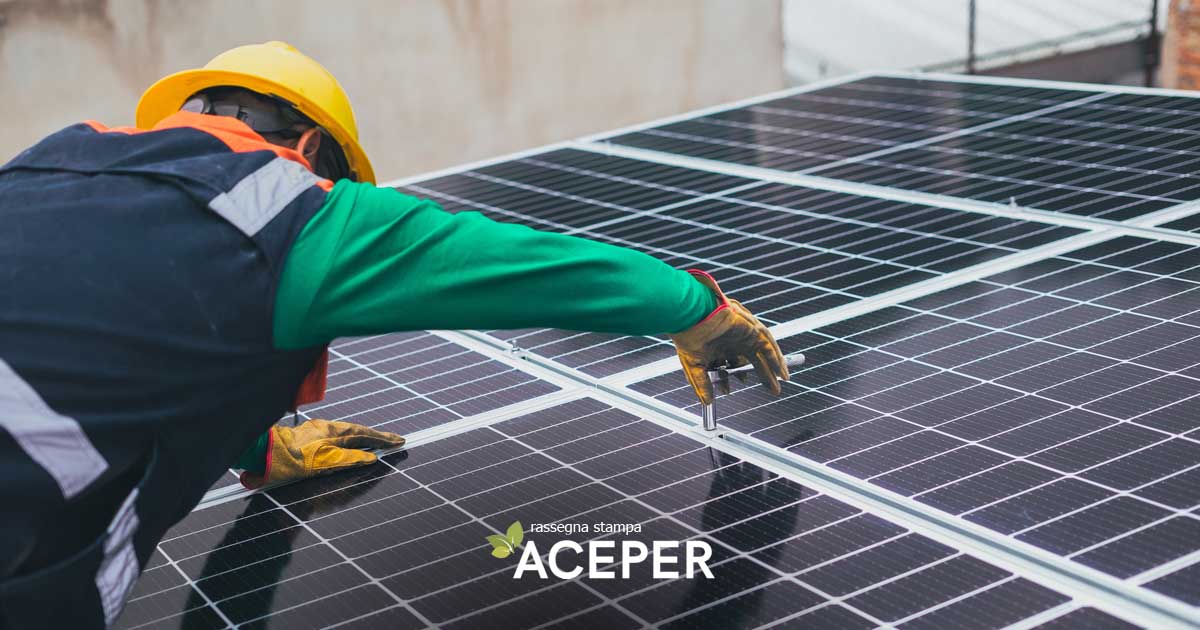6 April 2023

At the national level, the Revenue Agency has published the rules for claiming the tax credit granted for expenses related to the installation of energy storage systems connected to renewable energy plants, such as photovoltaic systems.
It is a new incentive introduced by the 2022 Budget Law for expenses incurred in 2022. Storage systems are designed to promote self-consumption, ensuring clean energy is available even at night or when photovoltaic panels are not productive. They are considered key to a home’s energy independence. Due to the energy crisis, this is a particularly favorable time for photovoltaics, which are experiencing a real boom: in the first six months of 2022, requests for the connection of new panels have tripled, making it increasingly plausible that Italy could free itself from dependence on Russian gas thanks to renewables.
Compared to the 450 megawatts of photovoltaic energy typically installed in a six-month period, by the end of this year, we will have reached 2,500 megawatts of new photovoltaic capacity. And the potential remains immense: the regions with the most photovoltaic systems are those with less sunshine—northern Italy. Piedmont is the region that produces the most photovoltaic energy in Italy (followed by Lombardy and Veneto), and Valle d’Aosta is the most “virtuous,” with the best ratio between actual energy production and expected production. This has been established by a study conducted by ACEPER, the Association of Consumers and Producers of Renewable Energies. The study was carried out on a very large sample of 5,236 photovoltaic systems across 17 Italian regions. This trend has also been influenced by a recent government amendment that extended the so-called simplified single model to further facilitate photovoltaic installations.
The main new development concerns the installation of systems up to 200 kW, for which the simplified single model can now be used (previously, this procedure was only applicable to systems up to 50 kW). Another recent innovation in Italy is plug-and-play photovoltaic systems: these are small solar systems that can be installed on balconies, windows, or in gardens and easily connected to a household power socket. No special authorizations are required for their installation, just a notification to the distributor. In the case of condominiums, authorization from the assembly is needed only if the system is installed on a common area. If more energy is produced than is needed, the excess is “donated” to the grid.
Finally, we come to the true Photovoltaic Bonus, which is available to individuals who, between January 1 and December 31, 2022, have incurred or will incur documented expenses for installing storage systems integrated into electricity production plants powered by renewable sources, even if they are already in place and benefiting from net metering incentives. The bonus can be deducted in the 2023 tax return for the 2022 tax period, and any unused amount can be carried forward to subsequent years. However, the percentage of the eligible tax credit is still unknown (but it will be calculated based on the ratio between the allocated resources—€3 million—and the total eligible expenses indicated in the applications. If the total eligible expenses are lower than the overall spending limit, the percentage will be 100%).
The application for the Photovoltaic Bonus must be submitted online between March 1 and March 30, 2023, using the web service available in the reserved area of the Revenue Agency’s website. A response will be received within 5 days. Additional non-repayable grants are available in Friuli Venezia Giulia and Sardinia for private individuals and condominiums to install photovoltaic systems. Both regions have approved self-consumption intervention plans that, in the case of Friuli, will also cover interventions carried out in the last part of the year. In Sardinia, however, the regulations will come into force in January 2023 as part of the energy income program, for which a specific call for proposals is expected. Friuli has set aside a €100 million fund, a true regional eco-bonus for energy efficiency improvements for private citizens who wish to work on their homes, whether primary or secondary residences, as well as for condominiums. This will essentially eliminate the installation cost of all systems, starting with photovoltaic ones, which can be combined with the deductions already provided at the national level. Technically, the fund will be established at the beginning of 2023 but with retroactive effect for a few months, so starting the work now will allow you to benefit.
The Sardinia Region has instead chosen the path of energy income for low-income families, providing €5 million for 2023 and another €5 million for the following year. The mechanism is interesting and involves the use of a fund supported by contributions for the sale of non-self-consumed energy to the GSE, with priority given to those living in economically disadvantaged conditions, through a public notice. In the case of condominiums, the installation of systems will be allowed not only on the rooftop but also on any other common area, including the roof. Residents will have the right to free self-consumption of the energy produced, but credits earned from the net metering service will go to fund the described program. The contribution cannot be combined with other incentives. Additionally, municipalities will be able to establish energy communities without drawing resources from their budgets.
See here the article from The Map Report dated 14/11/2022
“Source The Map Report”

Press review
For information



